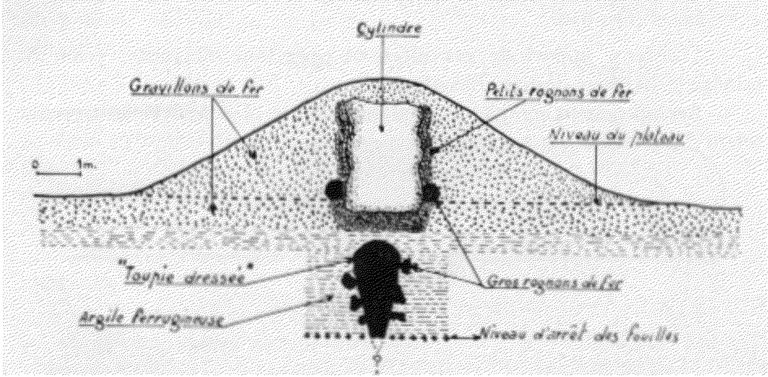An archaeological mystery. Tumuli in the islands of New Caledonia – courtesy of the latest issue of Popular Archaeology – see https://popular-archaeology.com/article/the-mystery-of-the-tumuli/ … We are talking about mounds rather than tumuli as the latter term is usually applied to grave mounds (although Ordnance Survey maps have tumuli for any mound unexcavated which the surveyors have spotted, which may include windmill mounds for example. On the face of it tumuli is probably the right terminology in spite of what the author of the press release says. These are definitely not burial mounds. On the Isle of Pines, an island of the French territory of New Caledonia, in the South Pacific, occupied by Melanisians (therefore related to Solomon islanders and Fijians), there are over 300 of these tumuli – and a 100 on the main island in the group. The origin and purpose of the tumuli is a mystery. It is thought that if they were built by humans this would imply a human occupation of the islands many thousands of years prior to currently accepted dates for human habitation. The author suggests a new hypothesis is required in further studies,
Ancient migrations in the Pacific are poorly understood. At present. This is especially true of the tumuli builders. The 400 tumuli of New Caledonia (those that have been recorded) contain cement blocks. Not cement as we know it but a form of cement derived from two ingredients, often with a central shaft hole. Only one mound has been 'fully' excavated by archaeologists but a lot of them have had exploratory diggings over the years. The archaeologists, at the time, described the dig as a nightmare. Presumably this was because they could not believe their eyes and were afraid of being laughed at by their peers back home. The author claims there must have been a human presence on the islands much earlier than accepted by mainstream. He goes on to say the tumuli should be called 'cement core tumulus' as that is an apt description of them. The cement core is likened to a cylinder – which implies circularity. The author disagrees and says they may rather be desribed as cubes rather than circular. The Melanesian 'Kanuk' people are thought to have occupied the islands from 1350BC – but this is by no means certain.
 .. The peculiarity of the tumuli is there are no cultural artifacts such as tools, pottery sherds, or charcoal etc. C14 dating of the cement has yielded ages ranging from 4120 +/- 90 years to 7710 +/- 70 years. Namely, around 2200BC and not far from 6000BC, two significant dates. It is unclear if recent modifications to C14 methodology have been involved in the research but at face value it would seem so. Older methodology came up with dates around 12000 years ago, at the beginning of the Holocene. An even earlier date is possible, it hs been suggested, as human activity in the Solomon Islands goes back to at least 28,000 years ago. In New Guinea it is probably even earlier. A connection may even exist with Pleistocene eastern Australia – as a large area of what is now continental shelf was submerged towards the end of the Pleistocene.
.. The peculiarity of the tumuli is there are no cultural artifacts such as tools, pottery sherds, or charcoal etc. C14 dating of the cement has yielded ages ranging from 4120 +/- 90 years to 7710 +/- 70 years. Namely, around 2200BC and not far from 6000BC, two significant dates. It is unclear if recent modifications to C14 methodology have been involved in the research but at face value it would seem so. Older methodology came up with dates around 12000 years ago, at the beginning of the Holocene. An even earlier date is possible, it hs been suggested, as human activity in the Solomon Islands goes back to at least 28,000 years ago. In New Guinea it is probably even earlier. A connection may even exist with Pleistocene eastern Australia – as a large area of what is now continental shelf was submerged towards the end of the Pleistocene.
